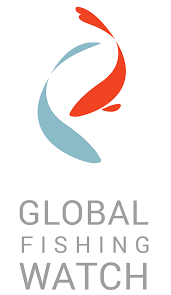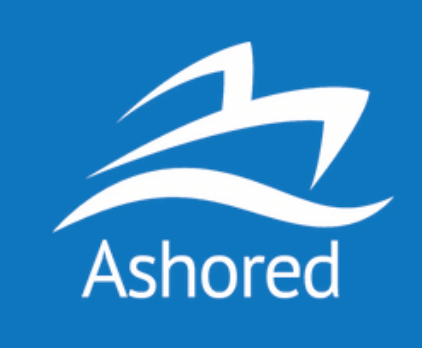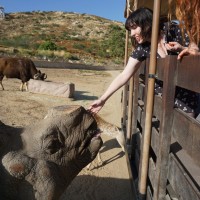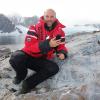Fishing has always involved ingenuity and invention, from the Pacific Islanders’ ancient tailoring of bones and shells into fish hooks (long before metal arrived in their cultures) to modern uses of everything from rotational sensors to machine learning to digitally understand where, when and how fishing takes place. Innovation typically takes place “in-house”, i.e. led by the fishing industry itself, with an increasing movement of start-ups, NGOs and entrepreneurs – motivated primarily by tackling the environmental and social challenges of seafood production – now joining this challenge. We have created a new “Sustainable Fishing Challenges” group on WILDLABS to try foster more of this innovation and collaboratively make fishing fit for the future.
At a very basic level, the three essential elements of fishing are 1. The vessel, 2. The fishing equipment (or “gear”), and 3. The fish (obviously). While some commonplace technologies are unrecognisable from those of the past (i.e. sonar fish finders, digital catch logbooks), some of the crucial components of the job have altered little (i.e. net design). Newly proposed vessel, gear or fish catch monitoring technologies must be robust, efficient and durable, meaning innovation needs to be answering a genuine need and be subject to thorough, collaborative testing (and consensus-building) before new advances are adopted across whole fleets or countries.
In this group, we challenge users to contribute their insights/expertise/opportunities across each of these three areas.
Learn more about these challenge areas:
Group curators
Fauna & Flora
Fisheries and Biodiversity Techical Specialist - lead FFI's insititutional fisheries strategy



- 0 Resources
- 14 Discussions
- 3 Groups
Arribada Initiative
Director at Arribada, a UK-based conservation technology research & development organisation



- 2 Resources
- 95 Discussions
- 11 Groups
Worked as a mechanical engineer for a defence co, then software engineer, then for a research lab specialising in underwater robotics.



- 1 Resources
- 135 Discussions
- 16 Groups


- 0 Resources
- 18 Discussions
- 18 Groups



- 0 Resources
- 12 Discussions
- 8 Groups
- @NevilleCLS
- | He/Him
CLS (Collecte Localisation Satellites)
- 0 Resources
- 1 Discussions
- 14 Groups
- @carlybatist
- | she/her
Science Outreach Lead-Rainforest Connection (RFCx) & ArbimonEcoacoustics, biodiversity monitoring, primates, lemurs



- 69 Resources
- 280 Discussions
- 18 Groups
Movement Ecologist studying the where, why, and how animals move throughout our world. Current work is investigating the movement and energetics of large neotropical bats in a changing environment with ephemeral resources.



- 0 Resources
- 23 Discussions
- 22 Groups
Freaklabs
I'm an engineer and product designer working on wildlife conservation technology.



- 0 Resources
- 271 Discussions
- 13 Groups
Founder & CEO of we.are.tohorā, creating a community that cares about whales, the environment and each other.
- 0 Resources
- 0 Discussions
- 13 Groups
- @StephODonnell
- | She / Her
WILDLABS
I'm the Community Manager at WILDLABS



- 150 Resources
- 656 Discussions
- 30 Groups
I am the executive director of FishEye Collaborative, a non-profit leveraging emergent underwater listening technologies to grow our understanding of marine ecosystems. I am also the president of FishEye Acoustics, a marine tech company developing a new class of acoustic sensors.
- 0 Resources
- 0 Discussions
- 6 Groups
Wildlife Drones
Wildlife Drones has developed the world’s most innovative radio animal-tracking system using drones so you can track your radio-tagged animals like never before.

- 11 Resources
- 8 Discussions
- 32 Groups
Whether you’re an aspiring or established entrepreneur, an early-stage startup, or a researcher, apply to the Project 71 – A Venture Competition for Ocean Regeneration. This competition is for you if you have a bold...
4 March 2024
Join the mission to help tackle IUU fishing with cutting-edge tech! The Allan Institute for AI is seeking a Senior Software Engineer to accelerate efforts to make sure those working to restore our ocean have the tools...
21 February 2024
SNTech are recruiting for 3 roles to assist us to develop computer vision pipelines for underwater monitoring
15 February 2024
Careers
The Charles Darwin Foundation for the Galapagos Islands (CDF) is recruiting a Senior Spatial Ecologist to join our shark research team and strengthen the ongoing long-term research on shark population ecology and...
24 August 2023
Careers
With a focus on using and combining vessel tracking data, other satellite derived datasets and big data methods and AI generated estimates related to vessel identity and activity, the Fisheries Analyist with Global...
15 June 2023
In this Conservation Tech Showcase case study from Ashored Innovations, we’ll learn how conservation technology is transforming fishing techniques to safeguard marine wildlife.
1 June 2023
This Data4Good project has led to immediate conservation impacts for many islands and many different resources. We hope that this project will inspire others to use data science and technology to solve the conservation...
17 May 2023
Global Fishing Watch are looking for a data scientist to join the Research and Innovation team. Help us tackle geospatial data fusion problems to produce the most complete picture of human activity at sea.
19 April 2023
Careers
We create Precision Fishing technology to help commercial fishermen catch their target species more consistently & sustainably.
5 April 2023
Check out this round-up of three of the latest news stories from the conservation tech world. See more conservation tech news by subscribing to our bi-monthly digest.
10 March 2022
Our first WILDLABS Editorial Series is now available for download! Read the full Technical Difficulties collection and explore stories of challenges, failures, and lessons learned from the conservation tech community....
19 January 2022
The Centre for Statistics in Ecology, Environment and Conservation, a research group within the Department of Statistical Sciences at the University of Cape Town, is now hiring for a funded postdoc or PhD postion with...
1 November 2021
November 2023
event
| Description | Activity | Replies | Groups | Updated |
|---|---|---|---|---|
| Hi Matthew,Thanks for your advice, this is really helpful!I'm planning to use it in a seagrass meadow survey for a series of ~20 drops/sites to around 30 m, recording for around... |
|
Acoustics, AI for Conservation, Data management and processing tools, Emerging Tech, Sustainable Fishing Challenges | 2 days 22 hours ago | |
| Congrats @MattyD797 and team!!! We do a lot of work in the underwater bioacoustic realm and your tool certainly seems like it would be a great instrumental addition to the... |
|
Acoustics, Build Your Own Data Logger Community, Marine Conservation, Protected Area Management Tools, Sustainable Fishing Challenges | 1 week 3 days ago | |
| Hi Scott, thanks so much for sharing your thoughts here! It would be great to learn more about this, would you be interested in finding a time to chat? Thanks! |
|
Marine Conservation, Sustainable Fishing Challenges, Wildlife Crime | 1 month 2 weeks ago | |
| If you are considering an external microphone and a towed system, then you would also be in a position to consider a raspberry pi with an external microphone with sbts-aru.... |
|
Acoustics, AI for Conservation, Marine Conservation, Sustainable Fishing Challenges | 3 months 4 weeks ago | |
| Hey Evelyn, I work on building self-powered buoys that collect various sensor data (sea surface and sub-surface) that can be sent back to mainland over cellular/satellite... |
+4
|
Sustainable Fishing Challenges | 1 year 11 months ago | |
| I’m an editor at FoodUnfolded – an EU-funded platform focused on reconnecting people with their food and where it comes from,... |
|
Sustainable Fishing Challenges | 2 years 10 months ago | |
| Hi all, Just some things I've come across on Twitter or through Wildlabs that weren't in a thread yet, for everyone's... |
|
Sustainable Fishing Challenges | 3 years ago | |
| Hi all! I am not in the marine/aquatic space myself, but I stumbled across this resource and wanted to share with you. It's a list... |
|
Sustainable Fishing Challenges | 3 years ago | |
| Hi Karima - Are you looking for volunteers in specific regions or fisheries? |
|
Sustainable Fishing Challenges | 3 years 2 months ago | |
| Happy new year all! A couple of great resources on the use of technology in the small-scale fisheries sector. Firstly a series of... |
|
Sustainable Fishing Challenges | 3 years 3 months ago | |
| Hi Wildlabbers, Following our recent Tech Tutors episode on monitoring fishing (check it out here! and ask Max... |
|
Sustainable Fishing Challenges | 3 years 4 months ago | |
| Hi Wildlabbers, Welcome back to Tech Tutors for season 2! This season's first episode featured Oceanmind's... |
|
Marine Conservation, Remote Sensing & GIS, Sustainable Fishing Challenges | 3 years 4 months ago |
Drop-deployed HydroMoth
2 April 2024 10:20am
15 April 2024 6:53am
Hi Matthew,
Thanks for your advice, this is really helpful!
I'm planning to use it in a seagrass meadow survey for a series of ~20 drops/sites to around 30 m, recording for around 10 minutes each time, in Cornwall, UK.
At this stage I reckon we won't exceed 30 m, but based on your advice, I think this sounds like not the best setup for the surveys we want to try.
We will try the Aquarian H1a, attached to the Zoom H1e unit, through a PVC case. This is what Aquarian recommended to me when I contacted them too.
Thanks for the advice, to be honest the software component is what I was most interested in when it came to the AudioMoth- is there any other open source software you would recommend for this?
Best wishes,
Sol
WILDLABS AWARDS 2024 - FinDrop: Accessible Acoustic Monitoring for Mesophotic Marine Environments
5 April 2024 10:22pm
7 April 2024 6:07pm
Congrats @MattyD797 and team!!! We do a lot of work in the underwater bioacoustic realm and your tool certainly seems like it would be a great instrumental addition to the community. Look forward to learning more about your project!
Liz
Project71: A Venture Competition for Ocean Regeneration
4 March 2024 10:49am
Species ID Needs?
19 February 2024 7:55pm
23 February 2024 2:10pm
Hello Nadia,
A forensic genetic challenge exists when DNA is destroyed by processes used in manufacturing of derivative animal products, preventing law enforcement in identification of protected species. Alternative methods such as lipid profiles or isotope analysis unique to certain species may be possible but require voucher specimens that may or may not be available and methods that have not been tested or peer reviewed. Examples below:
- derivative products made from endangered shark squalene (eg. Liver oil capsules).
- derivative products made from lion bone and tiger bone (eg. lion bone cake and tiger wine).
This is a law enforcement issue and would like to discuss possible solutions.
1 March 2024 2:27am
Hi Scott, thanks so much for sharing your thoughts here! It would be great to learn more about this, would you be interested in finding a time to chat? Thanks!
Senior Software Engineer, Skylight
21 February 2024 3:44pm
3x Ai 4 Conservation Job Roles (UK)
15 February 2024 3:28pm
Hydromoth for coastal & offshore surveying
16 November 2023 7:36am
18 November 2023 1:47am
Hi Sol,
I think your concern is well placed. The pros typically tow an array of hydrophones, in its simpler configuration it looks like a long fat rubber hose containing maybe a dozen transducers feeding their electrical signals to a recording unit back on the ship. All this is done to reduce noise from the ship, from waves crashing, and flow noise. The multiple transducers can also be electronically tuned to be directional so that it can be "pointed" away from a noise source (like the ship).
In your position, I would just try the simplest thing that could work, then fix the problems as they arise. It could be you may need to be dead in the water while recording. To address surface noise (slapping waves, wind), you could mount the hydromoth low down on a spar buoy, which you tow into position.
Best of luck, it sounds like an interesting project (c:
19 December 2023 2:20pm
Hydromoths are great for the price but they do not have the most streamlined housing and audio quality won't be as good as something like a SoundTrap or really any recorder with a proper hydrophone and 16-bit +DAQ system.
If you can afford it, this is an excellent SoundTrap based towed autonomous system NOAA have been using. It might work towed behind an autonomous vehicle
Alternatively, if you can have something inside the vehicle, a simple tape recorder (e.g. Tascam DR40X) and hydrophone on cable will provide excellent sound quality. You could also use something like a Raspberry Pi with audio focussed ADC hat to record but that would require a bit more programming. Even consider a standard AudioMoth and plug a proper hydrophone into the audio jack - this would still have a 12-bit ADC but would provide better sound quality than a hydromoth (hydrophones are more omnidirectional and there's no air filled causing reflections and attenuation)
20 December 2023 6:57am
If you are considering an external microphone and a towed system, then you would also be in a position to consider a raspberry pi with an external microphone with sbts-aru. Another option:
Senior Spatial Ecologist
 The Charles Darwin Foundation
The Charles Darwin Foundation
24 August 2023 11:22pm
Using an AI-based Warning System to Protect Whales in South Africa
28 July 2023 11:01am
Working with WWF, Vodacom is using cutting-edge artificial intelligence (AI), Internet of Things (IoT) technology and infrared cameras to help minimise whale entanglements in mussel farming ropes off the southwest coast of South Africa in Saldanha Bay.
CCI Defining Destructive Fishing Project: Update - YouTube
19 June 2023 4:26pm
"This seminar detailed our achievements to date in building an expert-led and consensus-based definition of “destructive fishing” and our subsequent development of a monitoring framework, for adaptation to national and local contexts. We thank our attendees for their time and insightful questions." - Jack Murphy
The Wildlife Society Conference
19 June 2023 5:59am
Fisheries Analyst (Pacific)
 Global Fishing Watch
Global Fishing Watch
15 June 2023 12:15pm
Ashored Innovations: Hardware and Software for Sustainable Fishing
 Ashored Innovations
Ashored Innovations
1 June 2023 9:46pm
Data Visualization in Service of Coral Reefs in Micronesia
17 May 2023 8:53pm
Data Scientist (Geospatial), Global Fishing Watch
 Global Fishing Watch
Global Fishing Watch
19 April 2023 10:34am
Office & Warehouse Exec
5 April 2023 6:22pm
How do I get started with mobile phones in sea turtle monitoring?
13 February 2023 10:01am
Global Fishing Watch's Marine Manager Raises the Bar on Ocean Monitoring
13 January 2023 12:09am
An online portal to help governments, researchers, conservation advocates & others monitor activity throughout the world’s marine environment, as well as design & implement protected areas. The Marine Manager is now open to anyone. Marine Manager provides users with a trove of human activity and environmental insights.
Crowdfunding Aerial Baseline Study of Ghost Gear in Koh Phangan, Thailand
18 December 2022 11:06am
We are developing a project in Thailand, using drones to locate lost & discarded fishing gear across Koh Phangan, Thailand.
We're 86% there & only need $1500 to get us over the line. If you can help us, we would really appreciate it!
This project uses drones to create a baseline survey of lost fishing gear & document effects of entanglement on marine species.
We are working with Core Sea & Koh Phangan Sea Guardians to develop a locally led method for ongoing monitoring for discarded fishing gear, using drones.
Thank you, Sol, Tania & Kat
Sea turtle monitoring
11 February 2021 11:44am
13 December 2021 6:19pm
Hi Evelyn
Not sure if you've come across this paper about green turtles in Turks and Caicos
https://www.frontiersin.org/articles/10.3389/fmars.2020.00690/full
18 March 2022 11:53pm
Hi Evelyn,
I learned of the torsooi database to collect sea turtle data. The database per se may not be that interesting as an asnwer to your question but I know they have developed software that recognizes individual sea turtles based on pictures of their heads. The pattern of the head segments allows this.
If you manage to make pictures remotely, by land-based cameras or drones or whatever, this may help monitoring the individuals.
In my humble and non-expert opinion, this software has the potential to do away with metal tags.
cheers
Frank
18 May 2022 6:03am
Hey Evelyn,
I work on building self-powered buoys that collect various sensor data (sea surface and sub-surface) that can be sent back to mainland over cellular/satellite comms. Are these nesting sites close to shore or are they relatively far out at sea?
Best,
Aadu
News: The Latest in Conservation Tech
10 March 2022 12:00am
Download Now: The Technical Difficulties Editorial Series
19 January 2022 12:00am
Opportunity: PhD or Postdoctoral Research Fellowships - Chinstrap penguin biologging
 Chris Oosthuizen
Chris Oosthuizen
1 November 2021 12:00am
Technical Difficulties: Tracking Thunderbird
 Ellie Warren
Ellie Warren
8 October 2021 12:00am
Innovators wanted: the UN Food Systems Summit
4 June 2021 1:00pm
Webinar: Implementing SMART in the Marine Environment
 SMART
SMART
20 May 2021 12:00am
Announcing the 2021 CLP Team Award Winners
 Conservation Leadership Programme
Conservation Leadership Programme
17 May 2021 12:00am
Recent articles/resources
14 April 2021 1:31pm
Repository of fish/fisheries tech projects!
9 April 2021 2:53pm
O-FISH (Officer's Fisheries Information Sharing Hub)
9 February 2021 1:42am
18 February 2021 12:01am
Hi Karima - Are you looking for volunteers in specific regions or fisheries?




















































5 April 2024 2:04pm
Hi Sol! This seems like an awesome project! I have a few questions in response: Where were you thinking of deploying this payload and for how long?
Regarding hydromoth recorders, there have been several concerns that have popped up in my work with deploying the them at this depth because it's a contact type hydrophone which means it utilizes the case to transmit the sound vibrations of the marine soundscape to the microphone unlike the piezo element based hydrophones.
A side not: for biodiversity assessments, the hydromoth is not characterized and is highly directional, so you wouldn't be able to compare sites through your standard aocustic indices like ACI and SPL.
That said if you are deploying for a short time, a hydrophone like an Aquarian H1a attached through a penetrator of a blue robotics housing that contains a field recorder like a zoom recorder may be optimal for half a day and be relatively cheaper than some of the other options. You could also add another battery pack in parrallel for a longer duration.